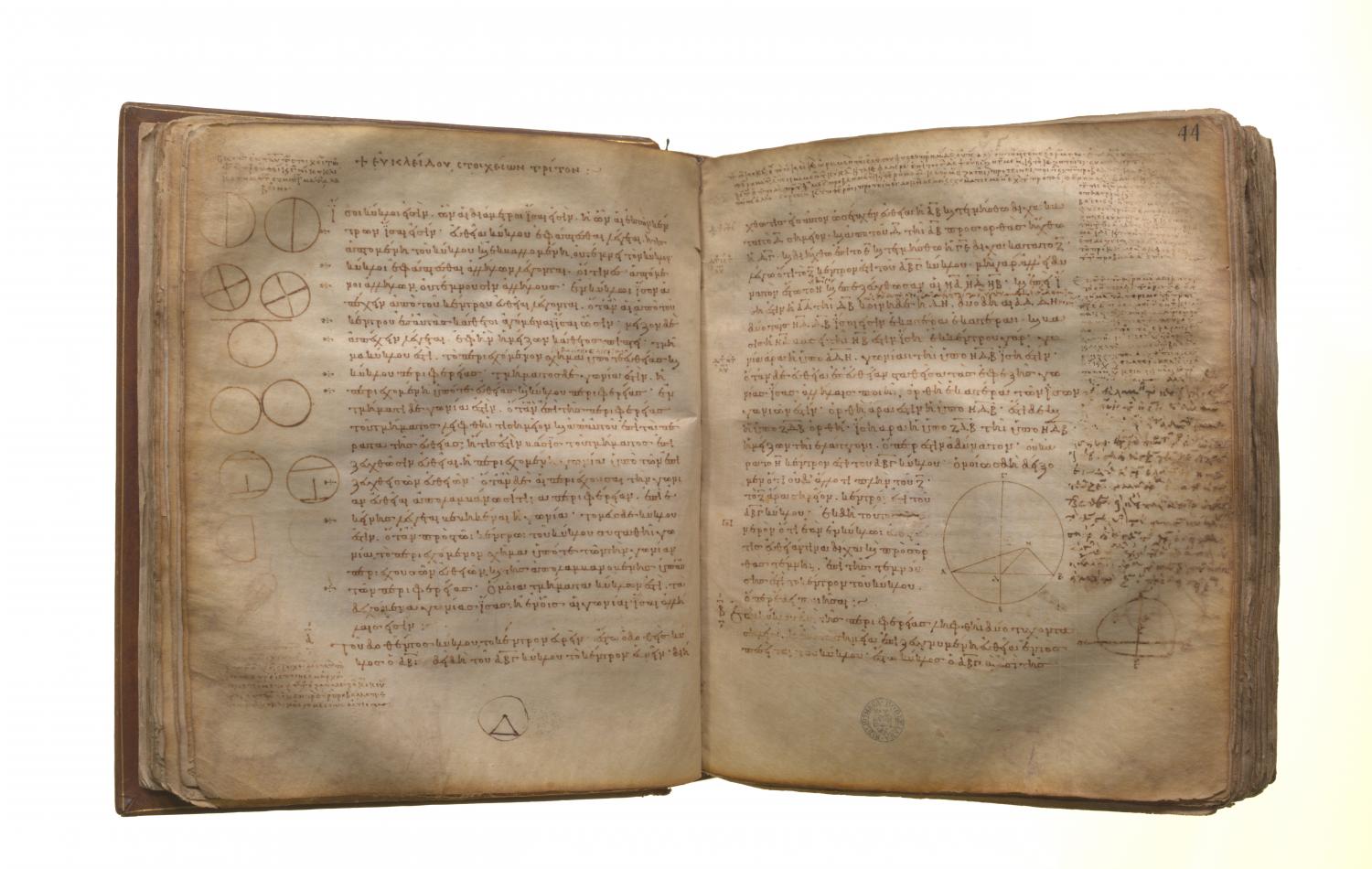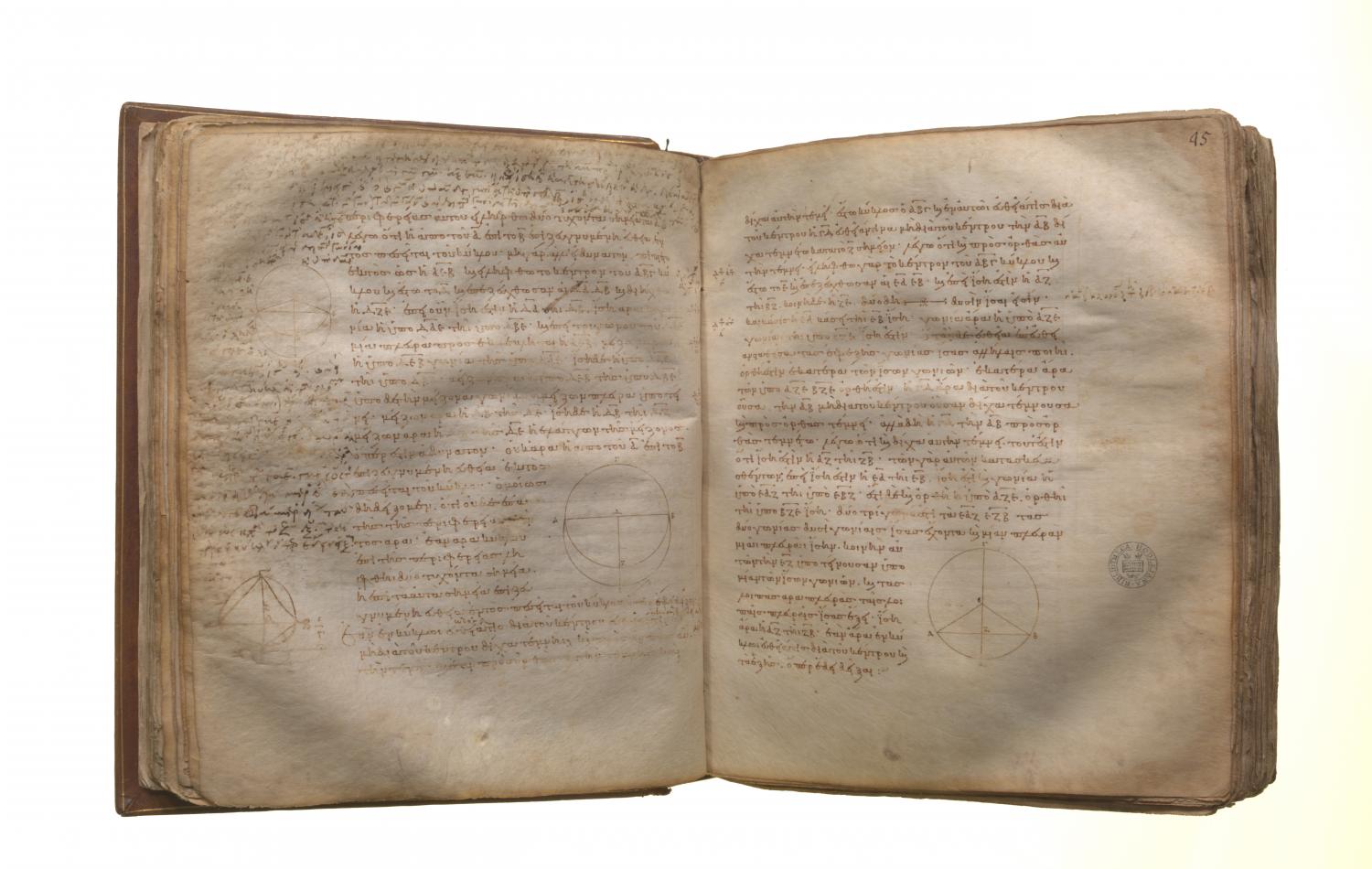Circles: Book 3 Proposition 2
Translations
If on the circumference of a circle two points be taken at random, the straight line joining the points will fall within the circle. Let ABC be a circle, and let two points A, B be taken at random on its circumference; I say that the straight line joined from A to B will fall within the circle. For suppose it does not, but, if possible, let it fall outside, as AEB; let the centre of the circle ABC be taken [III. 1], and let it be D; let DA, DB be joined, and let DFE be drawn through. Then, since DA is equal to DB, the angle DAE is also equal to the angle DBE. [I. 5] And, since one side AEB of the triangle DAE is produced, the angle DEB is greater than the angle DAE. [I. 16] But the angle DAE is equal to the angle DBE; therefore the angle DEB is greater than the angle DBE. And the greater angle is subtended by the greater side; [I. 19] therefore DB is greater than DE. But DB is equal to DF; therefore DF is greater than DE, the less than the greater:which is impossible. Therefore the straight line joined from A to B will not fall outside the circle. Similarly we can prove that neither will it fall on the circumference itself; therefore it will fall within.

